The Australian dream of home ownership has drifted further out of reach of younger Australians, with the 2018 Household Income and Labour Dynamics in Australia (HILDA) survey, released this week, showing that the proportion of Australians living in rented accommodation has increased from 28.0% in 2001 to 31.3% 2016:
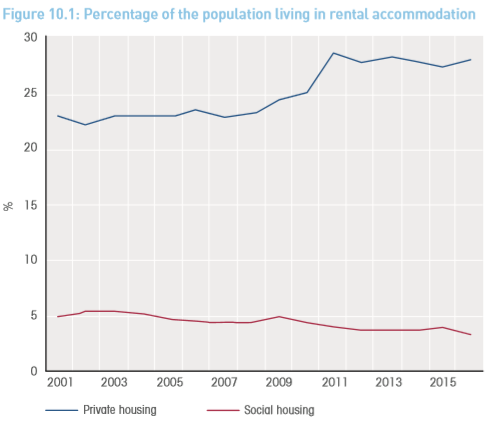
The percentage of renters moving into home ownership has also declined sharply, highlighting the plight of renters:
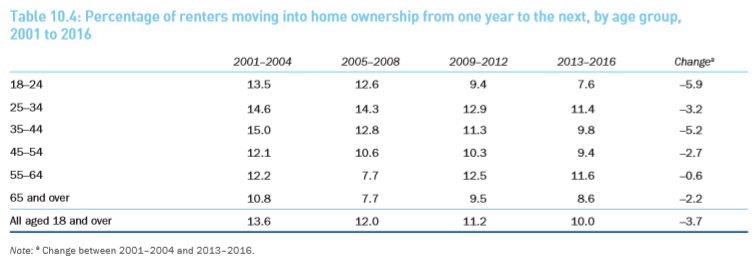
According to Melbourne Institute deputy director and HILDA report co-author, Roger Wilkins, “renters, particularly younger ones, are finding it increasingly harder to achieve home ownership”. Wilkins also noted that “there has been a growth in inequality across the generations, and this is very much tied to home ownership”.
Last year’s HILDA report also reported a sharp decline in home ownership amongst younger Australians, with Sydney and Melbourne hardest hit:
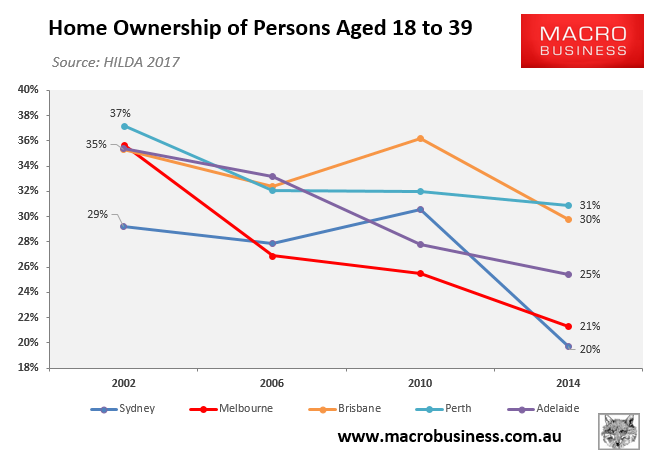
The 2016 Census, too, recorded a similar large decline in home ownership rates among younger cohorts:
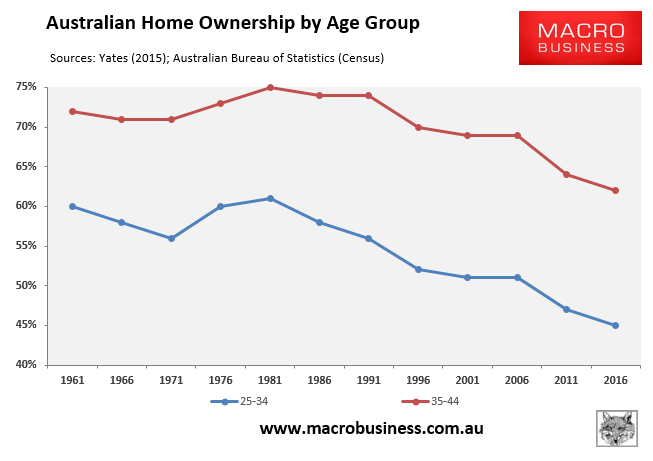
Whereas the Australian Institute of Health & Welfare’s latest report, released last month, showed that “Australia has seen a shift from outright ownership to owning with a mortgage, and a shift from overall home ownership to private rental”:
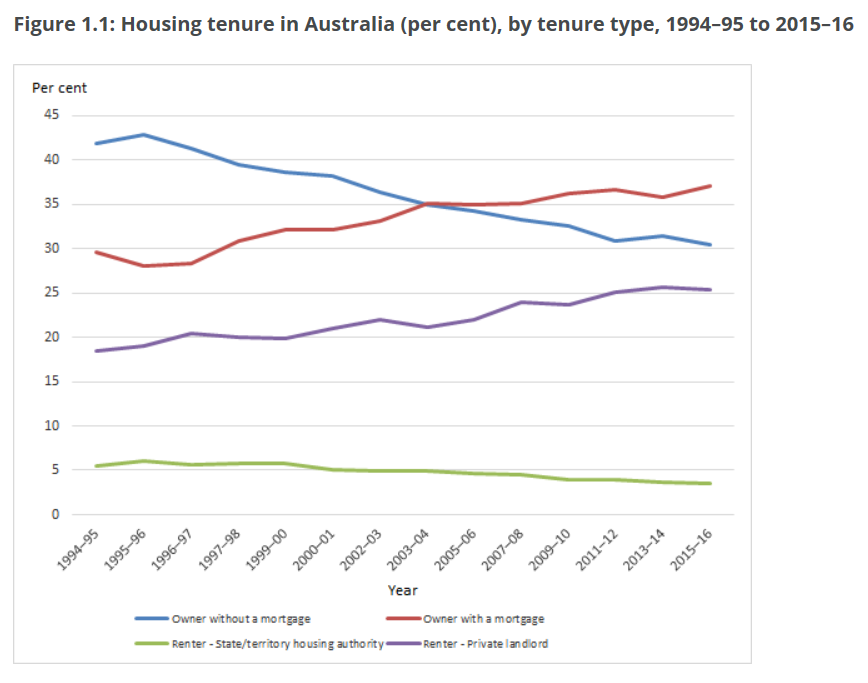
Whereas “Australia ranks in the lowest quarter in terms of aggregate home ownership rates (twenty-ninth out of thirty-seven countries)” but “ranks in the top third for home owners with a mortgage (twelfth)”:
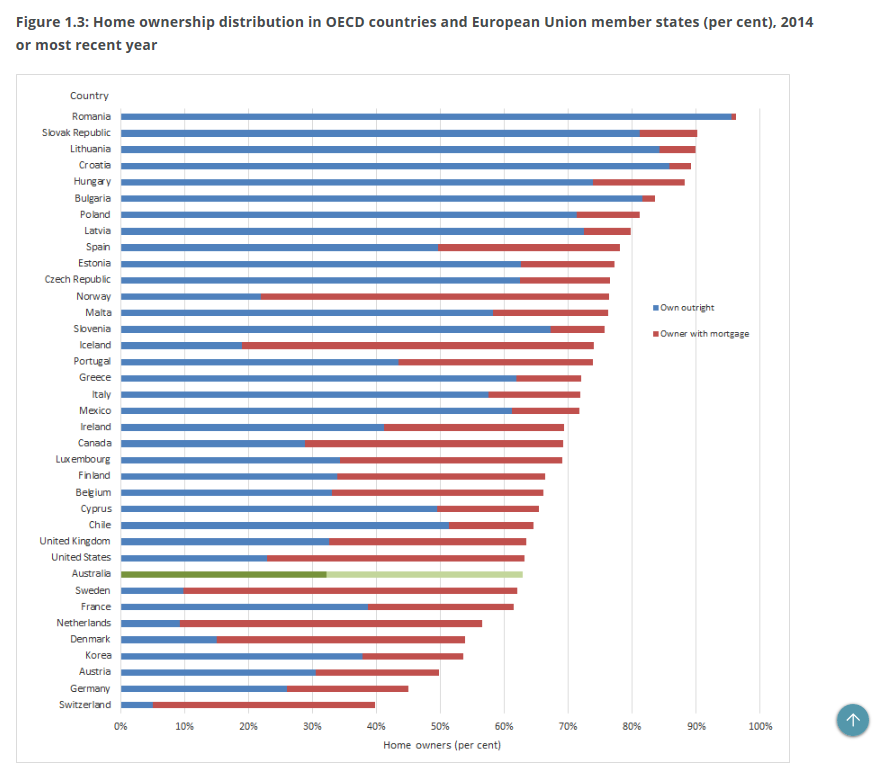
In short, the Australian dream of home ownership is dying. And the only way to reverse this situation is to tackle the following demand and supply-side distortions at their source:
- Normalising Australia’s immigration program by returning the permanent intake back to the level that existed before John Howard ramped-up it up in the early-2000s – i.e. below 100,000 from 210,000 currently [reduces demand];
- Undertaking tax reforms like unwinding negative gearing and the CGT discount [reduces speculative demand];
- Tightening rules and enforcement on foreign ownership [reduces foreign demand];
- Extending anti-money laundering rules to real estate gatekeepers [reduces foreign demand];
- Banning borrowing into property by SMSFs [reduces speculative demand]; and
- Providing the states with incentive payments to:
- undertake land-use and planning reforms, as well as provide housing-related infrastructure [boosts supply];
- swap stamp duties for land taxes [boosts effective supply];
- reform rental tenancy laws to give greater security of tenure [reduces demand for home ownership and reduces rental turnover]; and
- force developers to supply housing for lower income earners via inclusionary zoning [boosts supply of affordable rentals].
Sadly, policy makers have shown no intention of actually fixing the problem and instead resort to policy band aids, like first home buyer subsidies, which make the situation worse and are designed as a new profit centre for the property industry.

